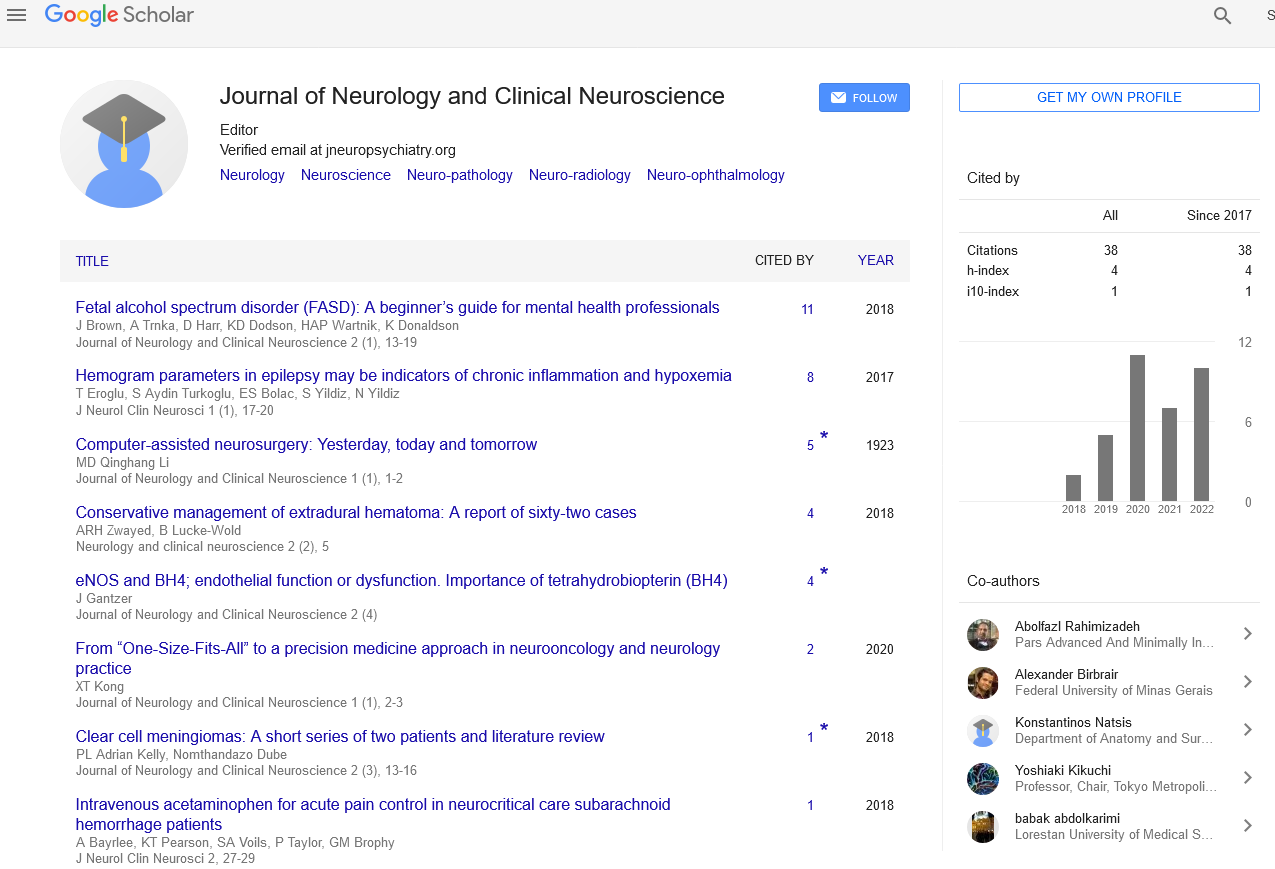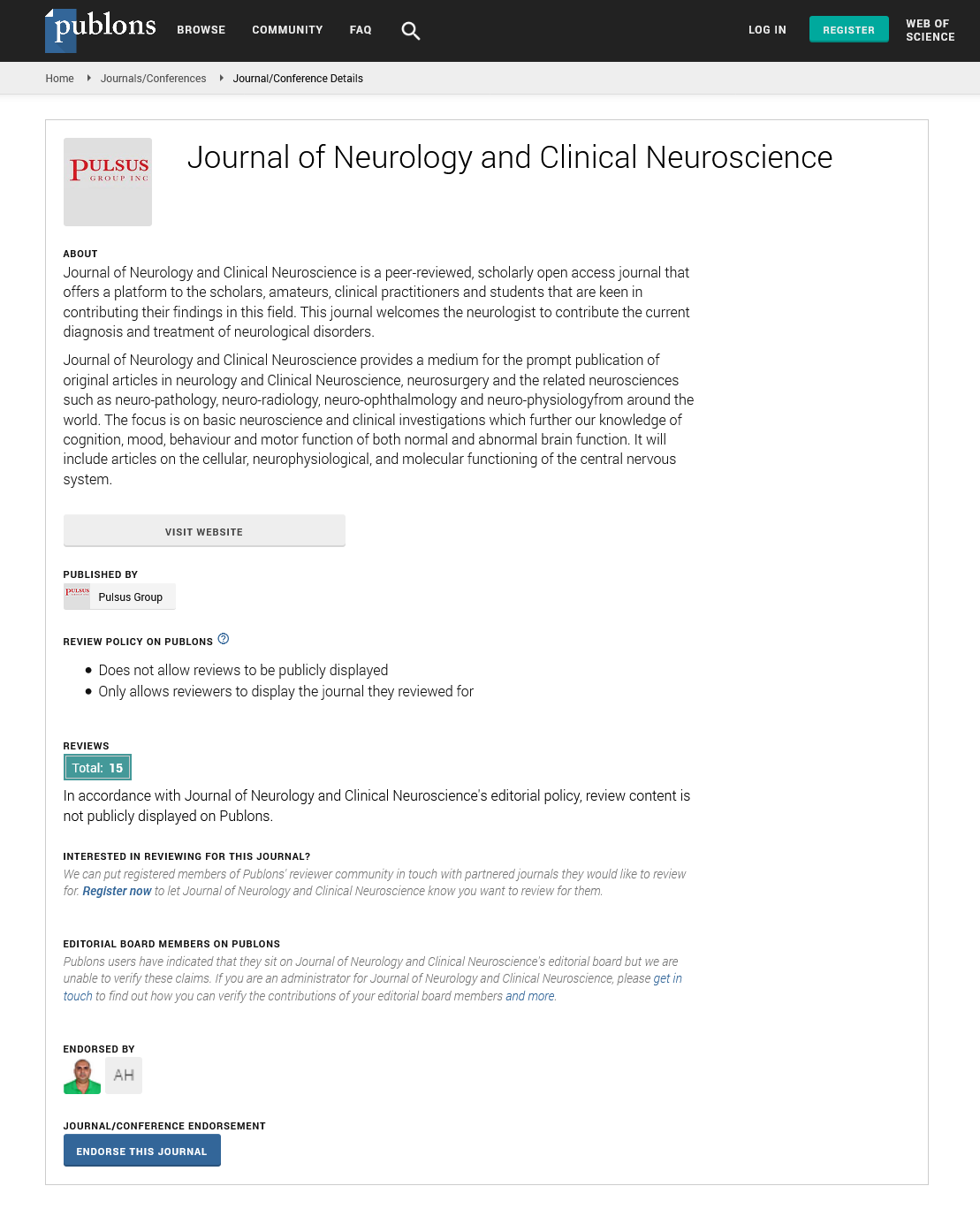Silent synapse-mediated synaptic plasticity in adult brain
Received: 03-Jan-2018 Accepted Date: Jan 07, 2018; Published: 15-Jan-2018
Citation: Yu-zhang L. Silent synapse-mediated synaptic plasticity in adult brain. J Neurol Clin Neurosci. 2017;2(1):3.
This open-access article is distributed under the terms of the Creative Commons Attribution Non-Commercial License (CC BY-NC) (http://creativecommons.org/licenses/by-nc/4.0/), which permits reuse, distribution and reproduction of the article, provided that the original work is properly cited and the reuse is restricted to noncommercial purposes. For commercial reuse, contact reprints@pulsus.com
Editorial
Long time ago, people used to believe that the adult brain is rather fixed. With several decades of research, now we all come to agreement that the brain reserves the potential of changing, i.e., plasticity [1], even till the later age, though some of the plasticity is harmful to our health. Among a bunch of studies investigating the mechanisms of adult brain plasticity, the silent synapse, especially AMPA receptor-silent synapse, is one of the most studied topics.
AMPA receptor-silent synapses are thought to be the immature synapses that lacking AMPA receptors (AMPAR) on the postsynapses, and NMDA receptors (NMDAR) are not responsive at resting potentials due to the blockade of Mg2+ [2,3]. AMPAR-silent synapses are widely existed in developing brains. As the brain developed, the AMPARs gradually insert into the postsynaptic membranes, and the silent synapses turn into functional synapses. Silent synapses play important roles during development. Previous study from our lab showed that the maturation of silent synapses is sufficient to govern the duration of critical period for ocular dominance plasticity in the visual cortex [4].
More and more research found that in adult brains, AMPAR-silent synapses re-emerge under certain circumstances. It is best known in addiction. After application of cocaine either actively or passively [5-7], the AMPARsilent synapse ratio increases, and is coupled with craving and locomotor sensitization [8]. The newly emerged AMPAR-silent synapses are found to be generated de novo, but not from re-silencing the existing functional synapses [5]. Another evidence is from the neurogenesis of the dentate gyrus (DG) in adult brain. The new born granule cells in DG show similar developmental stage as it in the neonates, i.e. they lack AMPARs as well. Unsilencing these AMPAR-silent synapses also requires excitatory activities, here is the cooperation of GABA synaptic depolarization together with the NMDA receptors [9]. Under pathology conditions, AMPARs could be silenced again. Amyloid-β oligomers — which are cumulated in the brain of patients with Alzheimer’s disease — are found to remove the AMPARs by longterm depression mechanism. Loss of AMPARs is the reason of reduction of dendritic spines and synaptic NMDA responses, and further causes the deficits in cognition [10].
Abnormality in maturation of AMPAR-silent synapses could cause neurodevelopment disorders. In the animal model of fragile X syndrome, which is usually companied by autism, AMPAR-silent synapses persist till later stage of development in the barrel cortex [11]. But excessive maturation does not equal to superior. Animals exposed to graded global hypoxia at early age experienced neonatal seizure, and result in autism-like behavior in adulthood [12]. When checking the hippocampus, there is a reduction of AMPAR-silent synapses.
Science is not only about principles, but also works for improvement of the quality of life. As the Precision Medicine Initiative leaded by NIH and multiple research centers, for the foreseeable future, the disease risk will be better predicted, the pathology will be better understood, and the patients will receive improved diagnosis and treatments. Neuroscience is a fundamental basis serves for cure of nervous system disorder. AMPAR-silent synapses is an approach with many drug binding sites, but this still needs more efforts on the mechanisms on cellular and molecular levels.
REFERENCES
- Zilles K. Neuronal Plasticity as an Adaptive Property of the Central-Nervous-System. Ann Anat. 1992;174(5):383-91.
- Isaac JT, Nicoll RA, Malenka RC. Evidence for silent synapses: implications for the expression of LTP. Neuron. 1995;15(2):427-34.
- Liao D, Hessler NA, Malinow R. Activation of postsynaptically silent synapses during pairing-induced LTP in CA1 region of hippocampal slice. Nature. 1995; 375(6530):400-4.
- Huang X. Progressive maturation of silent synapses governs the duration of a critical period. Proc Natl Acad Sci. 2015;112(24):E3131-40.
- Huang YH. In vivo cocaine experience generates silent synapses. Neuron. 2009;63(1):40-7.
- Lee BR. Maturation of silent synapses in amygdala-accumbens projection contributes to incubation of cocaine craving. Nat Neurosci. 2013;16(11):1644-51.
- Shukla A. Calcium-permeable AMPA receptors and silent synapses in cocaine-conditioned place preference. EMBO J. 2017;36(4):458-74.
- Brown TE. A silent synapse-based mechanism for cocaine-induced locomotor sensitization. J Neurosci. 2011;31(22):8163-74.
- Chancey JH. GABA Depolarization Is Required for Experience-Dependent Synapse Unsilencing in Adult-Born Neurons. J Neurosci. 2013;33(15):6614-22.
- Hsieh H. AMPAR removal underlies Abeta-induced synaptic depression and dendritic spine loss. Neuron. 2006;52(5):831-43.
- Harlow EG. Critical Period Plasticity Is Disrupted in the Barrel Cortex of Fmr1 Knockout Mice. Neuron. 2010; 65(3):385-98.
- Zhou C, Lippman JJ, Sun H, et al. Hypoxia-induced neonatal seizures diminish silent synapses and long-term potentiation in hippocampal CA1 neurons. J Neurosci. 2011;31(50):18211-22.





